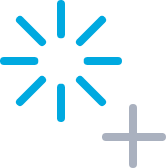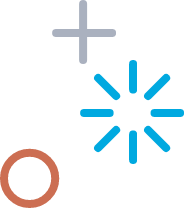Industry Perspective: How HIEs Support Data Quality
August 27, 2025 · Becky Kolinski
Health Information Exchanges (HIE) share clinical information across organizations, which can lead to better clinical decisions, less duplication, more effective transitions of care and lower administrative costs. Quality measurement and HEDIS® reporting are important downstream uses for clinical data.
WISHIN is Wisconsin’s state-designated HIE. We spoke with Matt Gigot, WISHIN’s Director of Population Health and Analytics, about the importance of data quality, and how WISHIN is finding new ways to deploy clinical data to benefit the organizations they serve.
What types of services does WISHIN provide?
Gigot: WISHIN connects 2,200 care sites. The vast majority are hospitals and health systems, but we also work with other types of organizations like skilled nursing, long-term care facilities, health departments and pharmacies. We connect the EHRs between all participating organizations to make a consolidated, longitudinal patient record. Member organizations can use our portal to view the patient’s consolidated record. They can also subscribe to notifications when there are updates, such as an emergency department visit. Those types of notifications can support coordination of care.
How does WISHIN partner with health plans?
Gigot: Nearly all health plans in Wisconsin participate with us. While the health plans are mostly consumers of our data, they also submit data to us on a limited basis. The most common use case is for member care plans, which are mostly being exchanged for Medicaid populations. One of the primary benefits of participating with WISHIN is that we provide access to clinical data for their entire population, not just a sample. Having that data opens up opportunities for gap closure and patient follow-up, and enables coordination with care delivery organizations.
Why is data quality important for HEDIS reporting and other use cases?
Gigot: Data quality is critical because we are trying to accurately reflect what’s happening in the care setting—and that’s ultimately what HEDIS is trying to do as well. Consumers of the data want to feel confident that what we are sharing accurately represents the care experience of the patient.
How does WISHIN receive clinical data?
Gigot: We receive data in two ways. The first is HL7® messages that are sent from the EHR in real time and may include non-standard codes to identify a service, such as a lab test or a colonoscopy. At some point after the data is entered into the EHR, it goes through a normalization process, where standard codes are applied (e.g., LOINC, SNOMED). That normalization is reflected in the second type of data we receive, a Consolidated Clinical Document Architecture (C-CDA) file. Those files are created at the close of a patient encounter, and they generally contain standard codes.
HL7 messages also have a description, so a user can understand what the service was, even if they don’t see a standard code. That is sufficient for many clinical applications like care management. But when it comes to HEDIS reporting, only the standard codes count, which is why the C-CDA is important.
What steps does WISHIN take to ensure data quality?
Gigot: We want to be confident in the provenance of the data, and make sure it reflects what’s in the medical record. Our team works with each customer during the onboarding process to make sure the data we expect to see in each field is actually coming in that way. Then we revisit that process whenever there are changes to the data model.
We haven’t encountered issues with degradation as a result of transferring data. Part of the reason is that we do not attempt to normalize the data, with the exception of some code mapping to standardize demographic fields, such as gender. The data we share reflects exactly what we receive from contributors.
Why did you decide to pursue NCQA’s Data Aggregator Validation?
Gigot: WISHIN was an early adopter, and we were validated in the first cohort. Getting validated was a way to demonstrate the depth and breadth of the data and provide value for our customers. NCQA validation is beneficial for our health plan customers because they can get clinical data from a single source, and that data has already been through primary source verification. It also benefits the health systems and hospitals because they don’t need to go through multiple data audits from the health plans. It establishes WISHIN as a trusted source of information, and demonstrates the rigorous processes we use to validate clinical data assets.
How can data quality assessments be improved or streamlined in the future?
Gigot: We are constantly looking for ways to leverage clinical data to support our customers’ needs. Participating in Data Aggregator Validation led us to create a Data Governance Committee that includes representation from our customers. We are leaning on this group to make recommendations and help us identify a path forward to improve data quality. By giving our customers a voice in the process, we’ve learned not to be prescriptive, and to allow ideas and solutions to bubble up organically.
A major focus is data standardization because customers are using clinical data for a multitude of purposes, and consistency of the codes is important. As part of this work, we are assessing the use of translation services, which would allow us to standardize pieces of information we receive that don’t currently have a standardized code. These services also often come with tools that would allow WISHIN and its customers to monitor data quality in real-time. Standardization enhances the usability of the information flowing through the WISHIN network, and opens the door for organizations to develop and implement tools that improve care for patients.
Learn More
- Read NCQA’s blog, Improving HEDIS Data Quality in a Digital World.
- Listen to our podcast, CQL and FHIR: Myths, Misunderstandings and More.
- Take our online education course, Introduction to the Digital Quality Transition.
- Find out how you can join NCQA’s Data Aggregator Validation program.







